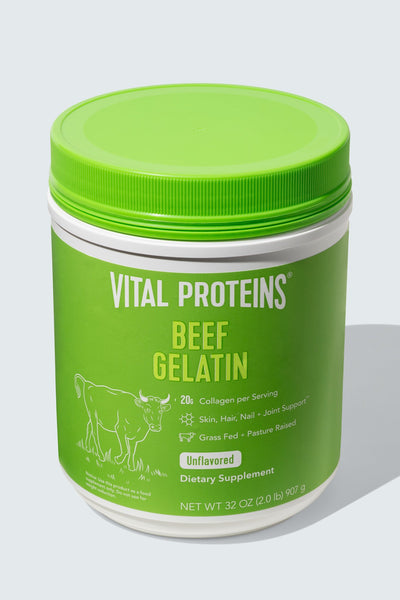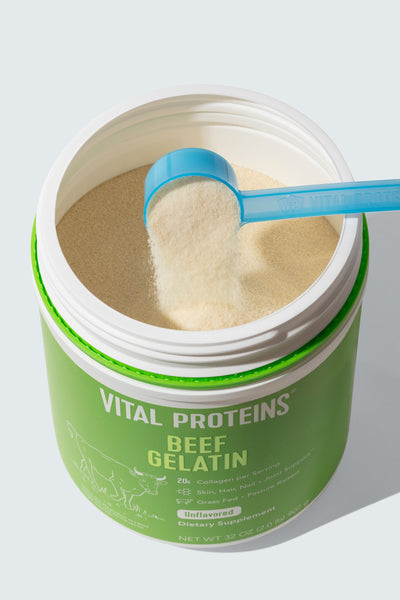Shower jelly soaps are luxurious and fun but can cost and arm and a leg at your local bath and body shop. Our DIY Shower Jelly Soap recipe is more affordable and easier that your kids can join in the soap-making process. Made with Castile soap, a natural oil-based soap with no additives, it’s a cleaner option for you and your family’s skin. Pick a few essential oils and your favorite silicone mold (think fishes, stars, hearts!) and whip up some homemade shower jellies in just minutes. Vital Proteins Beef Gelatinhelp them keep their shape and give them a fun jiggle.

DIY Jelly Soap
Yields 4 large jelly soaps
- 2 scoops Vital Proteins Beef Gelatin
- ¾ C water, divided
- ½ C liquid Castile soap (your choice of scent)
- 1 t sea salt
- 1 T skin-friendly oil (coconut, hemp, or jojoba work well; optional)
- Essential oils (for aroma therapeutic purposes; optional)
- Natural food coloring (optional)
Directions:
- In a large bowl, combine the Beef Gelatin with 1/3 cup water. Set it aside to allow the gelatin to bloom for 3-5 minutes.
- In a small saucepan, combine the remaining 1/2 cup water with the sea salt. Stir over low heat until the salt is dissolved, and the water has barely started to simmer.
- Pour it over the bloomed gelatin and whisk until the gelatin is dissolved.
- Add in the Castile soap, oil (if using), essential oils, and natural food coloring, as desired. Pour the mix into a glass baking dish or portion into silicone molds.
- Place them in the refrigerator until set up, about 1 hour.
- Remove from the fridge and cut into small cubes or invert from the molds. Keep 1 jelly soap in the shower or by the sink in a small dish and the rest stored in the refrigerator until needed. You’ll get about 3-4 showers out of each large soap when used like bar soap for a full body washing. Don’t let it sit in warm water or it will dissolve.
Essential oils that would work well are:
- lavender
- eucalyptus
- tea tree
- cedarwood
- rosemary
- lemon
You can find natural food coloring drops at most health food stores but other options to color with food are:
- ground saffron for a more orange/red-orange color
- a few drops of blueberry juice for a blue/purple color
- a few drops of beet juice for a pink/red color















